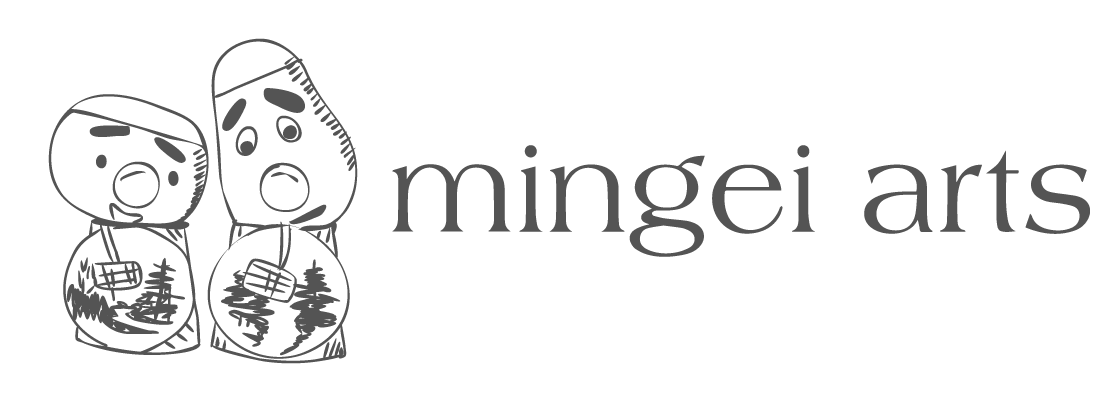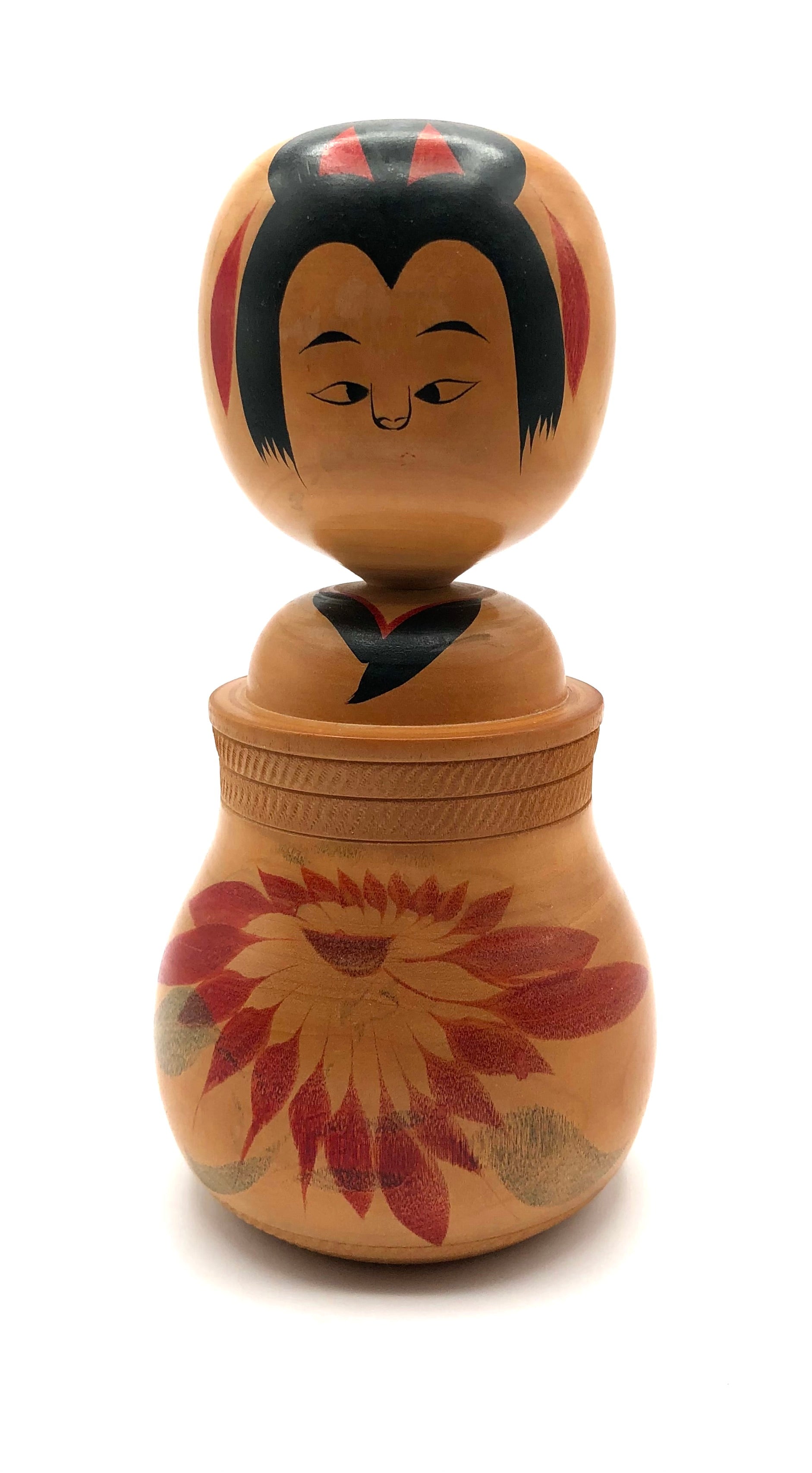
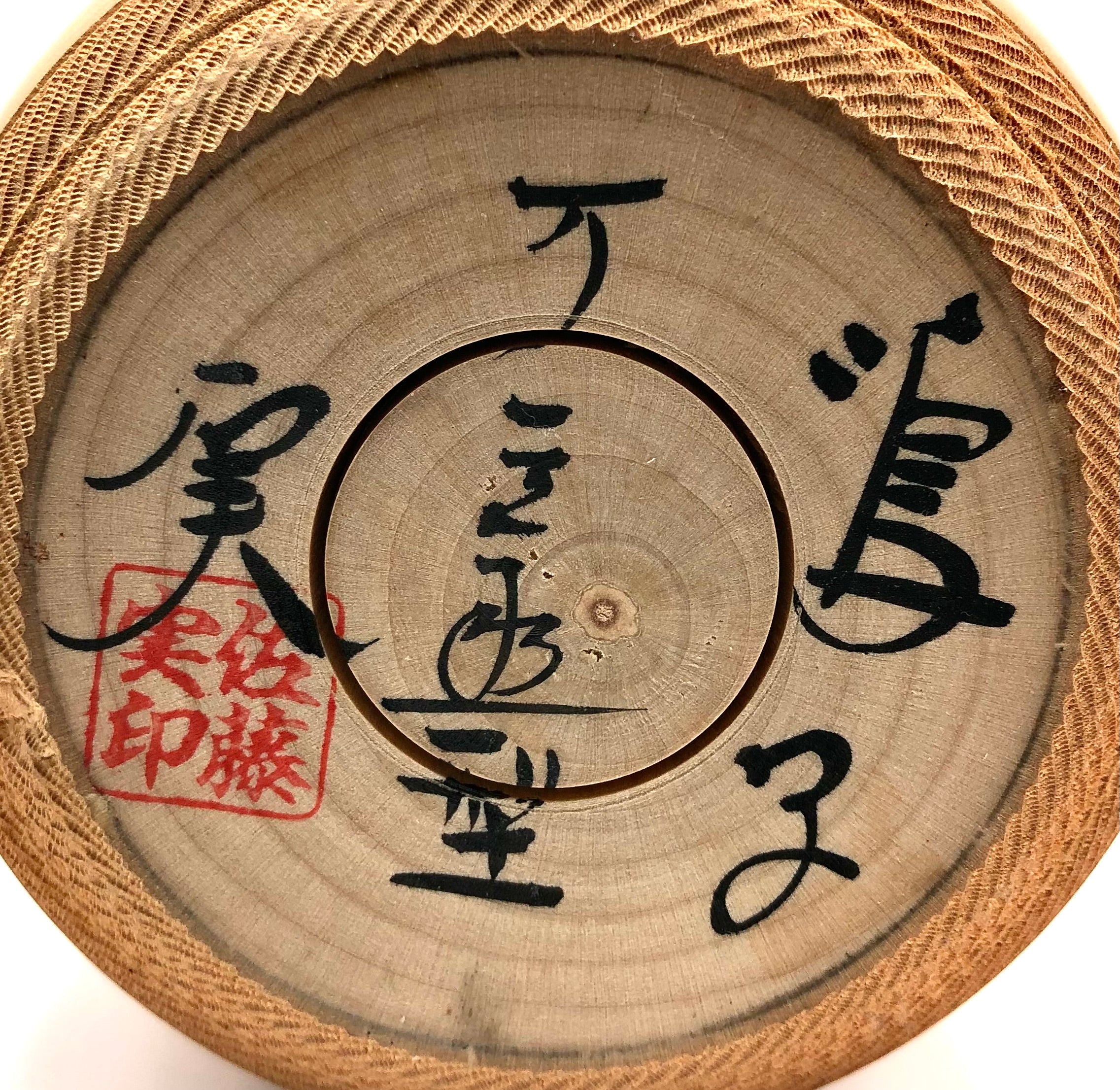
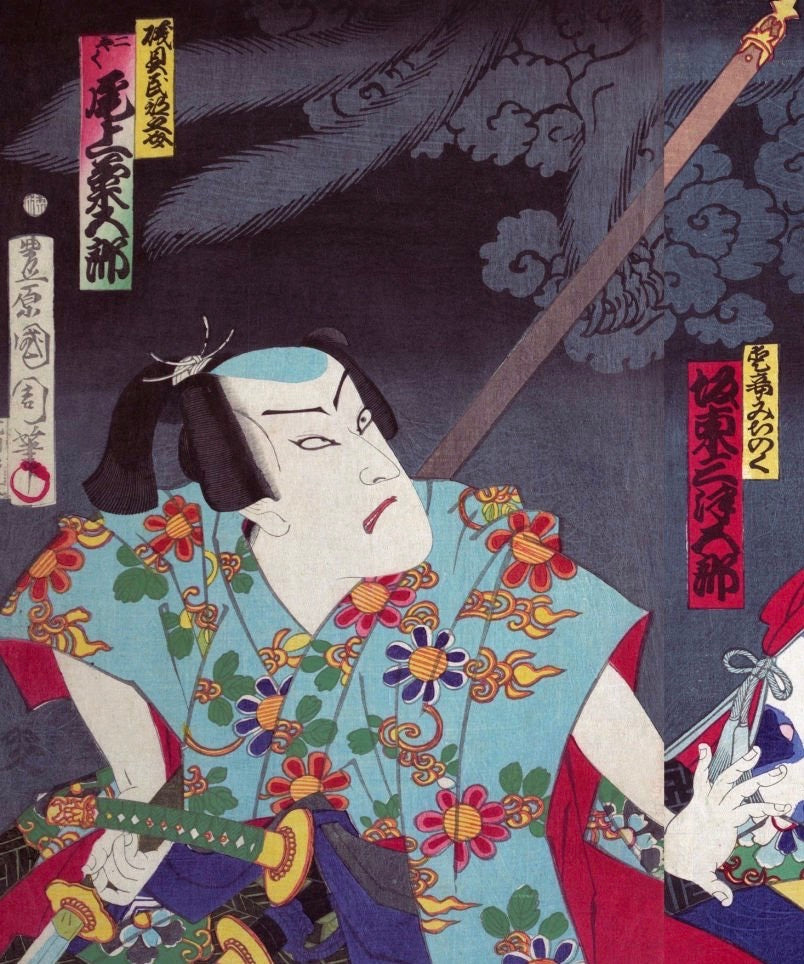
Vintage Japanese Traditional Nemariko / Narugo Kokeshi, entitled: Emotions by Sato, Minoru (1932-)
Dimensions: 8-1/4”h
This is a very unusual and rare Kokeshi Nemariko doll because it represents a Kabuki actor, emphasizing strength through facial expression. Mie in the dynamic “aragoto”, (exaggerated), at an appropriate time in a performance, crosses his eyes and glares at the audience complimented by his body movements. The actor’s eyes will open as wide as possible to convey the drama of the pose; if they’re supposed to be angry, both eyes will be crossed.
Sato, Minoru made this Kokeshi which has a short, rotund style. It differs from the Ejiko dolls by being taller than they are wide. It has an exaggerated, bold hairstyle with bangs set wide apart, framing the face. The doll's head is mounted on wonderfully proportioned shoulders and includes the collar of the undergarment in black and red. The face has side hair fringes, a single eyelid with crossed eyes, and a cat nose. In this case, the artist emphasized the beautiful Chrysanthemums blossom that fills the lower front portion of the body. It is made of one solid piece of dogwood,(mizuki), and not hollowed out as Ejiko dolls are for storing miniature toys. On the base of the doll, we see ‘Rokoru Moyo’ horizontal stripe carving encircling the figure, which has a natural colored candle wax, (Rosoku no ro, to seal the wood from daily wear. The doll’s identification is signed in script by the artist and has his Hanko on the bottom.
Condition: Excellent, meaning that the piece retains its original craft/workmanship, and shows a wonderful-developed patina commensurate with its age. It is void of damage, cracks, breakage, or repairs, and meets all the collectible Traditional Nemriko/Naguro Kokeshi standards.
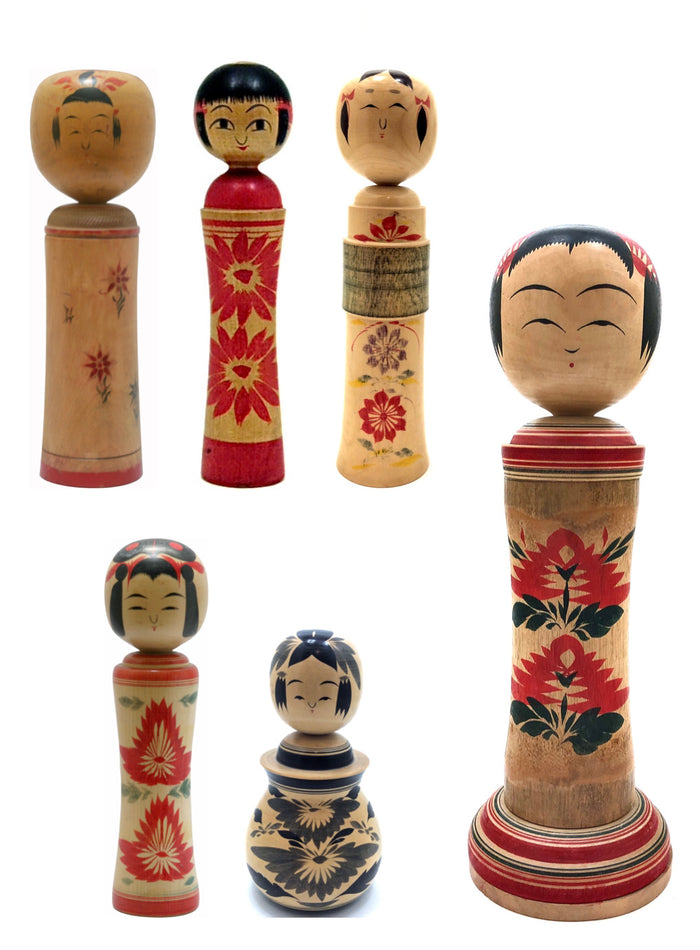
Japanese Traditional Kokeshi
Narugo-Kei (Family)
Prefecture: Miyaka
Origin:
This strain of Kokeshi is the oldest family of Narugo from Miyagi Prefecture, founded by Onuma Matagoro in the late Edo period. Naruko Kokeshi is known for its unique body and head shape. These are the popular “squeaking or crying child” dolls and are made of two pieces, with the head being attached to the body via a snap-in projection, allowing it to be turned, thus making the squeak. Naru is "sound or cry," and ko is “child". Thus, Narugo is a "crying child”. It's no surprise, then, that the Naruko Kokeshi makes a crying sound when her head is turned. They originally came from Narugo Onsen in Miyagi Prefecture and originated sometime in the Edo period, when approximately 120 craftsmen were producing this style. The Naruko kokeshi has been labeled the most distinctive and sophisticated. That said, the kanji for Naruko is still commonly seen with the kojin’s signature.
Collector's note – characteristics / painting style:
Narugo dolls are defined by their cylindrical, thick, and straight-shaped bodies, narrowing slightly at the waist with a shoulder-beveled dome called a mori agari bubun. Its head is large and round with narrow (Hitofude), one-stroke eyelids, an iris (Hitoe mabuta), and a slightly arched eyebrow. The nose is known as a cat’s nose, which is small and slightly curved. Its mouth consists of two small curved red lines or a small single red lip. Bangs are set wide apart and are the definitive feature of the head, with bangs over the forehead, side hair fringes, and a red ‘tegara ’- style ribbon. They are also very balanced and typically have paintings of chrysanthemums (Kiku), iris (Ayame), or peonies (Botan), and are occasionally painted black. Though these plain dolls are not as decorative as others of the Traditional school, their unique, flowing forms are stronger visually because of their inherent elegance.
 Leading Craftsmen:
Leading Craftsmen:
Akiyama, Chuichi, 1913-1984 - No additional published information
Hayashaka, Takashi, 1925-2010 - No additional published information
Izu Sadao, 1905-1938, Naruto Liniage. Master: and Reitaro. The eldest son of farmer Izu Kurataro in Ginzan Shinhata, Obanazawa City, Yamagata Prefecture. The owner of Fujiya Inn and the head of the ward, Yamagata Prefecture Woodworking Workshops, were held at the Hayashihachi Inn, where Izu-san learned the techniques of woodturning. After acquiring the techniques, Izu Sadao continued his woodturning work at Ginzan, specializing in making Kokeshi dolls and toys. Takei Takeo sent an order for Kokeshi and toya to Izu Sadao, and the works he acquired in December 1928 were introduced in the "Japanese Folk Toys, Eastern Section." Around 1933 and 1934, Izu installed three foot pedal lathes in his own home, invited Omiya Yasujiro and Endo Kozo as craftsmen, and his father, Izu Kurataro, made a large number of toys and Kokeshi dolls by cutting wood boards. No additional published information
Kakizawa, Koretaka, 1940, (Narugo, Miyagi) - Master:Takahashi, Morio. No additional published information
Kishi, Mason, 1931-2010 - No additional published information
Matsuda, Mitsuo, 1929-2010 - No additional published information
Omiya, Masataka, 1939-1990 - No additional published information
Onuma, Matagoro,1924 - Grand Master Izu Mamoru, 1925, (Master: Izu, Sadao (Obanazawa, Yamagata). No additional published information
Onuma, Kengo, 1937 - (Master :Onuma, Kenzaburo). No additional published information
Samurai, Shoji, 1927-2011 - No additional published information
Sato, Yoshihiro, 1936-2015 - No additional published information
Sugi, Kunio, 1942 - (Master: Takakashi, Takeo). No additional published information
Takahashi Morio, 1917 Master- (Apprenticed under Master: Takahashi, Sakari). No additional published information
Takahashi, Matsuko, 1920-2005 - No additional published information
Takahashi, Takeo, 1916-2005 - (Master: Takashi Takezo). No additional published information
Explore & Learn More about Narugo-Kei (Family)